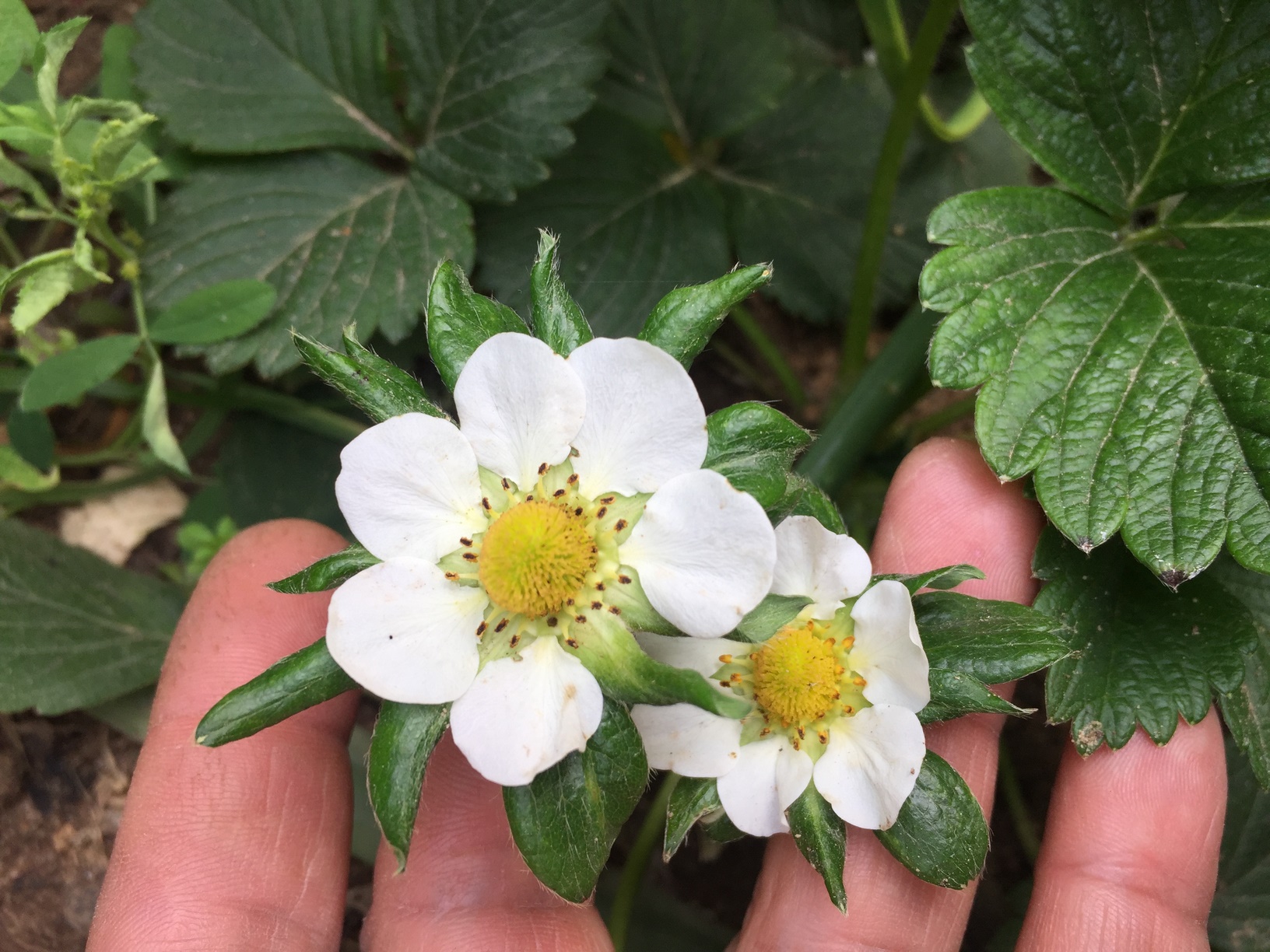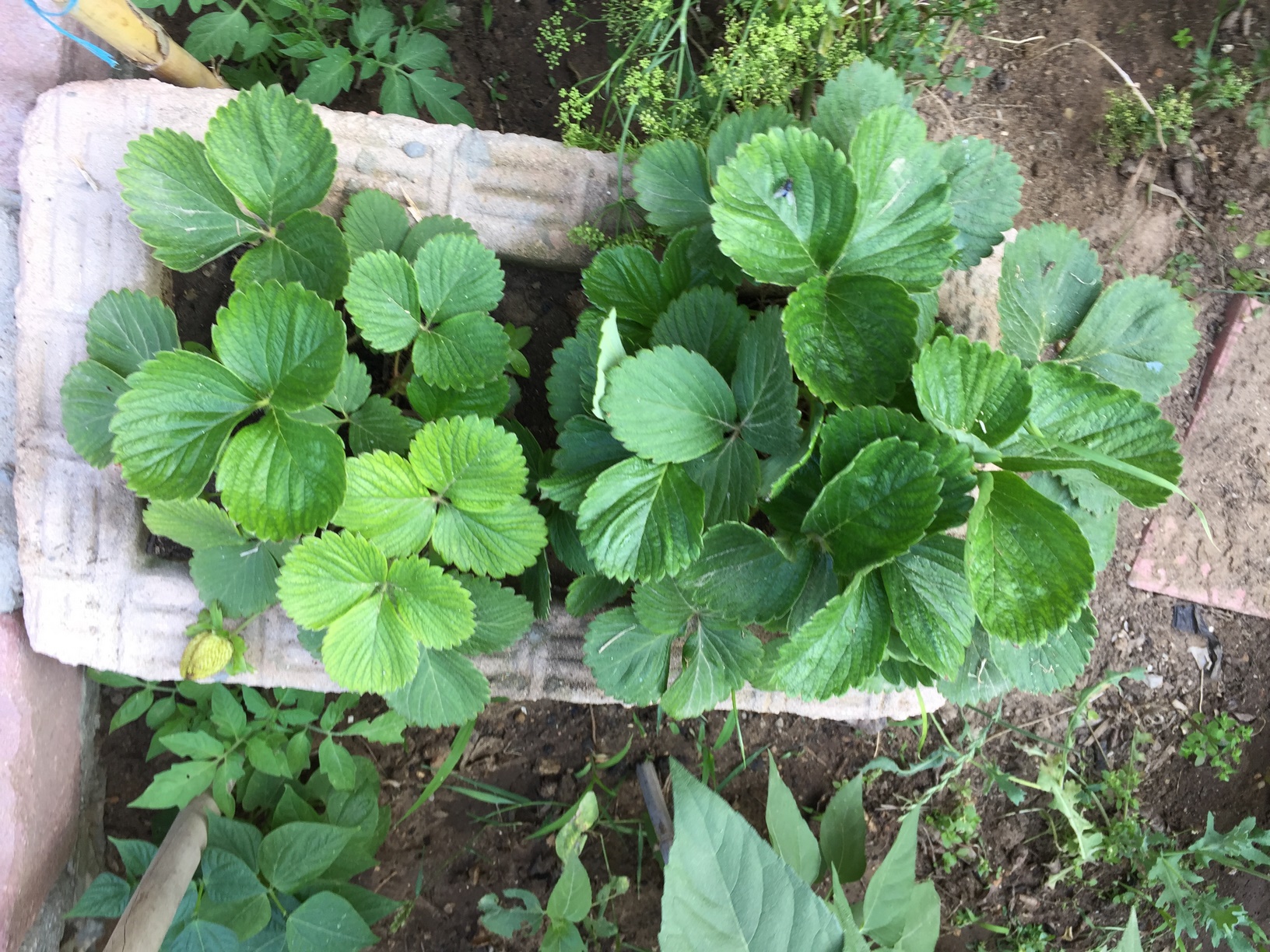
History of Strawberry Plant
The strawberry plants were being cultivated in Europe during the 1300’s, but never in commercial quantities. Records in England show that King Henry the 8th purchased strawberries for eating in 1530. The cultivated large-fruited strawberry (Fragaria ×ananassa) originated in Europe in the 18th century. Most countries have developed their own varieties during the 19th century, and those are often specially suitable for the climate, day length, altitude, or type of production required in a particular region. The Virginia strawberry, Fragaria virginiana, a wild species was exported from the United States colony in the 1600’s to England, where it was favorable in taste, quality, size, and yields over the native European strawberry. After these two types of strawberry plants were planted in close proximity to each other, natural hybrids began to grow and substantial improvements were the foundation of the development of the modern day commercial strawberry industry.
Many new varieties of the strawberry were developed in the 1700s, in North America. The varieties that developed from the cross breeding of American and European strawberries were known for their sweet taste and perfect size. Commercial strawberry production began in 1800. Only selections of the native Fragaria virginiana were raised till 1840.
Types of Strawberries
There are about 600 strawberry varieties found today stem from five or six original wild species. You’ll be surprised how different they are in shape, color, and taste. Typically, the larger the berry is, the more water it contains, the smaller the berry is, the greater the intensity of flavor. Strawberry varieties are extremely sensitive to local conditions, a variety that performs well in one location may do poorly in another area.
Strawberries are classified as June bearing - Everbearers and Day neutral
June bearing strawberries are tremendously popular and common. They typically produce the largest strawberries, form flower buds in the fall as the day length decreases. The harvest begins in early to mid-June and continues for three to four weeks. June bearing strawberries produce their first crop the second year after planting.
Everbearing strawberries begin bearing at the same time as June bearers. The difference is everbearers will continue to produce berries throughout summer and into fall. They can produce some berries into October if growing conditions are favorable.
Day neutral strawberries will produce a good yield in the first year they are planted. They flower and set strawberries whenever the temperature is between 35 and 85 degrees. They will still be producing fruit in October during milder years. Their fruit is usually small to medium in size, rarely exceeding one inch.
How To Grow Strawberries
The best strawberries you’ll ever taste will come from your own garden if you grow it, because fully ripened strawberries have a rich, aromatic flavor unmatched by their supermarket counterparts. Growing strawberry is very easy if you follow these simple tasks but the most important is to begin with the right variety!
Choose a sunny spot, strawberries love areas that get a lot of direct sunlight without shade. Dig the soil over well. Add lots of compost to enrich the soil and remove any weeds, including the roots of weeds. Strawberries like rich soil. If the soil is heavy clay or poor sand, add well-decomposed organic material such chicken manure.
Watch How to Fertilize Garden Soil With Chicken Manure Video
How To Plant Strawberries
Strawberries grow from the crown. It's the base of the plant before the roots start. When planting this crown cannot be covered, either in your garden or containers. However, it should not be left too exposed too, always ensure that the crown is sitting just above the soil. Mulch after planting, to protect the surface soil and to keep the strawberries clean.
1: Remove the strawberry plant from the container
2:Dig a hole in the soil. Place the strawberry plant in the hole, keeping the crown above the soil line.
3: Press the soil firmly and gently around the base of the strawberry plant.
4: If you have other strawberry plants. Keep each plant about 35–40 centimeter (13.8–15.7 in) apart. It making rows, keep the strawberries about 90 centimeter (35.4 in) apart.
5: Water regularly. Water the crown of the plant. Avoid watering fruit, this can cause fruit to rot.
6: Remove the first flowers. By removing the first flowers that appear, you will give the strawberry plant a chance to grow more vigorously and produce a stronger root system. When the plant is strong allow subsequent flowers to keep growing.
7: Runners deplete the energy of the strawberry plant, so keep them under control until the plant is well established by removing them. Later on, you can leave some runners to grow to establish new plants.
8: Check regularly your strawberries. The first signs that the strawberry flowers have turned into fruit will be small green strawberries.
These will continue to grow and then turn red when they're ripe.
How To Grow Strawberry In Containers
Container gardening is becoming increasingly popular as an easy and inexpensive way to brighten up your space. Strawberries are a compact plant and even gardeners with limited space can have a few pots at hand and growing strawberries plants off the ground in containers will help cut down bacterial and fungal disease problems.
- Dig a hole that is deep enough for your strawberry’s new plant.
- Remove the strawberries from the pot and place them within the hole.
- Push the soil back over the roots to cover them.
- Keep the crown at or slightly above the soil!
- Water well around the strawberries.
- Remember when you plant your strawberries, be careful not to plant them too deeply.
Water your strawberries plants whenever the soil feels dry about an inch below the surface. You don't want the plants to be sitting in water or soggy soil, but you don't want them to remain dry for days and start to wilt. The soil in containers dries out faster than soil on the ground. Long periods of hot, dry weather may require daily watering and as the plants grow more roots, they will need more frequent watering.
Give strawberries plants liquid organic fertilizer every 2 weeks in the spring and summer.
Harvest all strawberries once they ripen, and don’t leave any rotting berries on the bush.
Strawberry Plant Pests and diseases
Strawberry plants are susceptible to threat from various pests and diseases.
Red root rot
Growth of the the plants will slow down and they will become dull bluish green. Affected plant will form no or only few flowers. To prevent this harmful effect you should purchase disease-resistant strawberry plants.
Wilt disease
The fungi of this vascular disease will penetrate into the plant through its roots. Damaged plants lag behind in growth, which manifests itself especially on hot days. Diseased leaves will discolour dull yellowish green.
Blossom-end rot and stem rot
In an early stage small brown spots can arise on the buds. After flowering the calyx tails will turn brown, the fruits will discolour brown and will dry. The fungus will hibernate on dead parts of plant above ground level.
Mildew
Strawberry can be attacked by mildew. Especially during hot weather the fungus can spread quickly. Some varieties are especially sensitive. The leaves will curl, forming white fungus fluff on the underside. Aeration should be done.
Root-knot
Plants which have been seriously attacked, are strongly lagging behind in growth and are worthless for future use. So far this nematode causes hardly any problems in strawberry plants.
Strawberry mite
Strawberry mites are living exclusively on strawberries. They are very small and stay in curled up leaves in the centre of the plant. Mites can be observed in the folded young leave in the centre of the plant. This young leaf will shrink. The growing point of the plant will become dull and bluish green in color.
A simple defense against pests is to plant marigolds around the garden. Marigold roots release a chemical that kills nematodes.
Strawberry Plant Care
Continue to tend the plants. Strawberry plants are fairly hardy and they'll continue to produce fruit year after year, for at least four years. Strawberries should be rotated to different areas of the garden every 3-4 years. Soil that has been in strawberries for four years or more can build up a population of root-rotting pathogens. By moving the patch this can be avoided. Straw mulch is equally important in the spring and summer as it reduces fruit and flower diseases by covering the soil and reducing spore movement carried by raindrop splash. In summer, several fungal diseases cause dark spots to form on leaves. Clipping or mowing strawberry foliage and raking it away in summer can interrupt the life cycles of some strawberry pests and diseases. If you manage your strawberry plants properly, you can enjoy homegrown berries forever, without having to buy new plants every few years.

How To Harvest Strawberries
Harvesting your own strawberries from your own patch is rewarding and you get the freshest, most delicious berries possible. When the whole strawberry is red, it's ready to pick.
Not all the berries will ripen at the same time, so plan on harvesting strawberries every two to three days. Morning is the best time for picking strawberry fruit, whem the berries are still cool pick the fruit with about one quarter of the stem attached. Grasp the stem just above the berry between the forefinger and the thumbnail and pull with a slight twisting motion. With the stem broken about one-half inch from the berry, allow it to roll into the palm of your hand.
How To Store
Strawberries will stay fresh for three days in the refrigerator, but after that, they go downhill fast. When you have more strawberries than you can eat, freeze them to eat later. Remove the stems, halve or slice them if you like, then freeze in a single layer on a baking sheet until solid. Store in an airtight container or ziptop freezer bag.
Strawberries are a tasty and healthy fruit that the whole family can enjoy and the sweetest, juiciest strawberries you'll ever enjoy will come from your garden. Try to grow your own it's very easy!
You might also like to read:
Want to watch strawberries related videos:
Please let us know your thoughts, experiences, or questions in the comments below. If you like this, you can share with your friends.
Happy Gardening!
This web site is a participant in the Amazon Services LLC Associates Program, an affiliate advertising program designed to provide a means for sites to earn advertising fees by advertising and linking to amazon. Some of the links to products on this site are affiliate links. These are products that I've used or recommend based from homesteading experience. I do make a small commission (at no extra cost to you) from these sales.(alert-warning)


























